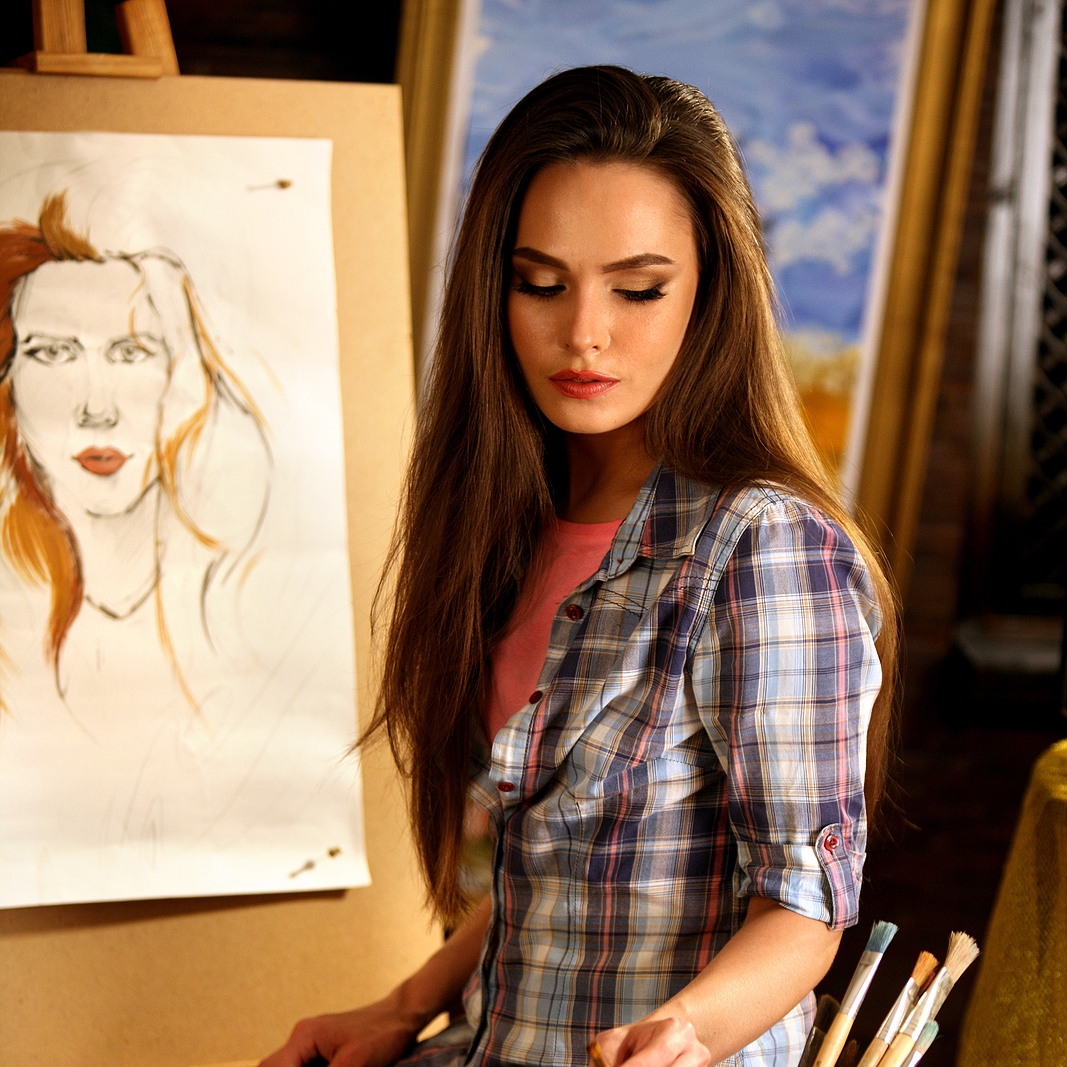Portrait art invites us to explore the depth of human expression through various mediums, each offering unique qualities and techniques. The most prominent mediums—oil, acrylic, watercolor, and digital—provide diverse ways to capture the essence of a subject. This article delves into the characteristics and methods of each medium, helping artists and art lovers appreciate the rich possibilities they offer. Whether you're new to portrait art or an experienced painter, understanding these mediums will enhance your artistic journey.
Oil Paints
Oil paints have been cherished by artists for centuries, known for their richness and durability. The ability to blend and layer colors over time makes oil paints a preferred choice for many portrait artists. Oil paints boast a storied history, with masters like Leonardo da Vinci and Rembrandt harnessing their potential to create timeless works. Their blendability and long drying time make them ideal for achieving realistic and emotionally resonant portraits.
Characteristics of Oil Paints
Oil paints stand out for their vibrant colors and versatility. The extended drying period allows artists to manipulate the paint, creating intricate layers and smooth transitions.
- Rich colors. Oil paints offer deep, vivid hues that bring portraits to life.
- Blendability. The slow drying time facilitates seamless blending of colors and tones.
- Versatility. From thick impasto to delicate glazes, oil paints can be applied in various ways to achieve different textures and effects.
Techniques in Oil Portraits
Working with oil paints involves mastering specific techniques to achieve the desired results.
- Layering and glazing. Thin layers of paint can be built up to create depth and luminosity.
- Impasto. Applying paint thickly adds texture and highlights features.
- Blending. Careful blending of wet paints allows for smooth color transitions and realistic shading.
Acrylic Paints
Acrylic paints have become popular for their flexibility and quick drying time, making them a favorite among many contemporary artists. Developed in the mid-20th century, acrylic paints offer a modern alternative to traditional mediums. Their adaptability and fast drying time make them suitable for a wide range of artistic styles.
Characteristics of Acrylic Paints
Acrylics are known for their bright colors and adaptability, capable of mimicking both oil and watercolor effects.
- Fast drying time. Acrylics dry quickly, enabling rapid layering and adjustments.
- Flexibility. They can be used on various surfaces, including canvas, wood, and paper.
- Durability. Once dry, acrylics are water-resistant and long-lasting.
Techniques in Acrylic Portraits
Creating portraits with acrylics involves leveraging their unique properties.
- Layering and glazing. Quick drying allows for the rapid buildup of layers to create depth.
- Use of additives. Gels and pastes can modify the texture and drying time of acrylics.
- Mixed media. Acrylics can be combined with other materials, such as pastels or ink, for diverse effects.
Watercolor Paints
Watercolor paints are renowned for their delicate, luminous quality, offering a distinctive approach to portrait art. They have a long history and continue to be favored for their ability to capture light and movement with transparency and subtlety.
Characteristics of Watercolor Paints
Watercolors are celebrated for their fluidity and the ethereal effects they can achieve.
- Transparency. Watercolors allow light to pass through, creating a glowing effect.
- Fluidity. The paint's fluid nature makes it ideal for capturing spontaneous expressions.
- Portability. Watercolor sets are easy to carry, making them perfect for on-the-go painting.
Techniques in Watercolor Portraits
Mastering watercolors involves embracing their unique characteristics and learning specific techniques.
- Wet-on-wet. Applying wet paint on a wet surface creates soft, diffused edges.
- Wet-on-dry: Painting wet on dry paper allows for sharper details and contrasts.
- Texture effects. Techniques such as using salt or masking fluid can create interesting textures and patterns.
Digital Art
Creating digital portraits involves mastering software and tools to achieve desired effects. Artists often experiment with various digital brushes and blending tools to create detailed and textured artworks. The flexibility of digital art allows for innovative techniques, such as combining elements of traditional and modern styles or exploring monochromatic themes like black and white portrait art, which can highlight contrasts and bring out the emotional depth of the subject. Using multiple layers in digital tools also facilitates complex compositions and easy adjustments, enhancing the creative process.
Characteristics of Digital Art
Digital art provides a wide range of options, from traditional painting effects to innovative digital techniques.
- Unlimited palette. Digital tools offer an extensive range of colors and effects.
- Versatility. Digital portraits can be easily modified and experimented with.
- Integration. Digital art integrates well with other digital tools, enhancing creative possibilities.
Techniques in Digital Portraits
Creating digital portraits involves mastering software and tools to achieve desired effects.
- Layering. Using multiple layers allows for complex compositions and easy adjustments.
- Digital brushes. Various brushes can mimic traditional painting techniques or create unique digital effects.
- Blending tools. Software features like blending modes and opacity adjustments help achieve smooth transitions and rich textures.
Comparing the Mediums
Each medium—oil, acrylic, watercolor, and digital—offers distinct advantages and challenges. Understanding these can help artists choose the best medium for their style and project.
- Oil paints. Rich colors and blendability but require long drying times.
- Acrylic paints. Quick drying and versatile but can dry too fast for some techniques.
- Watercolor paints. Delicate and luminous but less forgiving of mistakes.
- Digital art. Highly flexible and easily modified but requires access to technology and software.
Conclusion
Exploring different mediums in portrait art broadens an artist’s toolkit, offering new ways to express creativity and capture the essence of their subjects. Each medium—oil, acrylic, watercolor, and digital—brings unique qualities to portrait art, enriching the artist’s journey and the viewer’s experience. Experiment with these mediums to discover the best fit for your artistic voice and vision.
